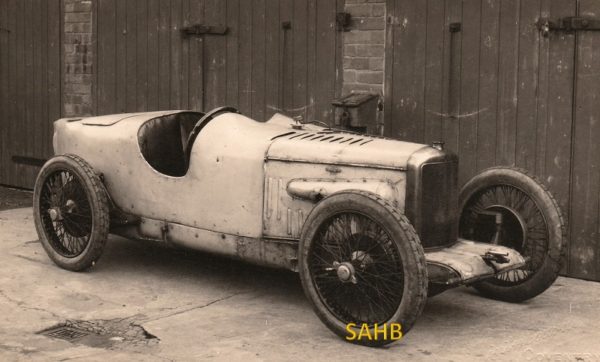
Many are the unrecorded father-and-son interviews that would have made for compelling eavesdropping. One such would have been that between John Newton of the Manchester motor agents Messrs Newton & Bennett, and his son Noel on the latter’s return from Italy in 1923.
Newton & Bennett’s connections with the Italian motor industry went back to the Edwardian era when the firm held the UK agency for SCAT cars of Turin. Offering good performance and quality engineering, their success led Newton in 1913 to promote the NB 12hp car, designed by him and made in the Turin factory he owned; the NB chassis were bodied here. Fine cars of good, conventional design and stylish appearance, the outbreak of the Great War introduced production difficulties that were to terminate matters. Newton’s Turin factory was sold to Diatto in 1915.
In the early 1920s, Newton & Bennett acquired the UK agency for the sporting Ceirano cars of Turin, and John Newton packed off his son Noel with instructions to oversee the design of a light popular car that could be made there and imported, something to rival the recently-launched Austin 7. Noel’s enthusiasm for motor sport exceeded that of his father. In Turin, he met Olivio Pellegatti, a young consulting engineer, and between them they conceived an 1100cc racing car, no doubt using the funds allocated for the intended Italian Austin 7 rival. In the event, three racing cars were built by Pellegatti in the absence of any significant involvement with the Ceirano works, plus another chassis or two, and Noel Newton and Pellegatti were entrants in the 200 Miles Race at Brooklands in 1923. The undoubted potential of the exquisite Newton racing cars suffered from not unexpected lack of development and they were withdrawn before the start. No doubt Noel had attempted to convince his father that racing successes would enhance the name of Newton and thereby their business.
The pair of racing Newtons passed through various hands in England, making occasional racing appearances; one was exhibited on N&B’s stand at Olympia along with a chassis, and a sales brochure was produced for the sporting ’10hp Newton’. There matters foundered and the venture soon was forgotten, but one of the racing cars did survive in long term ownership, having been both raced and used on the road until the early 1930s. With only storage weathering, it was almost unaltered on discovery in 1963, and, once restored, has enhanced the vintage speed event scene and intrigued connoisseurs.
A 4-cylinder fixed-head engine had twin overhead camshafts and dry sump lubrication, and the built-up crankshaft and camshaft each ran in three ball races, now changed to white metal. Lightweight tubular connecting rods were fitted, again replaced with a safer design. Ignition always was by coil, and alternative inlet manifolds offer single- or twin-carburettor options. Many of the engine castings are in magnesium, and emanated from the foundry at the Isotta-Fraschini works. There is a cone clutch and the gearbox with central change is in unit with the engine. The rest of the chassis is conventional for a racing car of its day, with chain-compensated four wheel braking, push-rods through the king pins activating the front brakes.
In the later 1920s, Sydney Cummings bought the surviving Newton for his daughter Ivy to race, then it passed to Lea-Francis driver S H Newsome in Coventry, which is where our photograph was taken in March 1927.







Leave a Comment